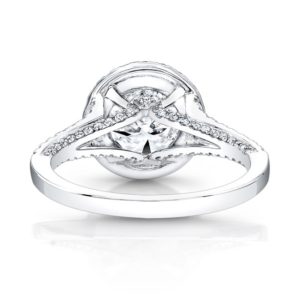
Gold, Silver or Platinum? A Quick Guide to Choosing the Best Metal for Your Jewelry
[ad_1]

Shopping for jewelry is one of the most difficult yet thrilling tasks for any jewelry lover. It is hard because of the wide variety of options available. However, it is an exciting chore because you get to sample hundreds of beautiful jewelry pieces. One of the most important decisions you have to make when buying jewelry is the choice of material. For instance, if you are on the market for a black diamond gold ring you have to think about the best metal for the ring. Gold, silver, and platinum remain the most popular jewelry materials and each has its pros and drawbacks.
To make things easier, this simple guide highlights the strengths and weaknesses of each of these metals to help you make an informed choice. Read on to discover the best material for your jewelry.
Gold: the Granddaddy of Precious
Metals
When thinking of a beautiful ring or necklace, the first material to
come to mind is most likely gold. For centuries, gold has dominated jewelry
making and for many good reasons. It is one of the most beautiful precious
metals, because it oozes class,
elegance, and style. Any gold
piece, however plain, signifies glamour. This makes gold an obvious choice for your diamond ring.
Other reasons to choose gold jewelry include:
Multiple color possibilities: Pure gold is too soft for jewelry making. To strengthen it, you need to combine it with a stronger metal. This leads to different warm, rich color varieties such as yellow gold which contains a little silver and copper to provide its golden glow. Rose gold has a reddish tone from the copper that is added to it, while white gold features palladium and silver or nickel, copper and zinc.Durability: Gold is renowned for its durability and ability to withstand the test of time. A quick look at most family heirloom reveals that gold jewelry is long lasting, with some pieces lasting centuries.Ease of customization: Gold is malleable and you can customize your gold ring or any other jewelry to suit your desired style.Versatility: Gold jewelry can suit any occasion. Gold works well for any occasion, whether you are in the market for wedding jewelry or a piece to mark your anniversary. You will also find gold pieces for both formal and casual events.Low maintenance: Gold jewelry does not rust, tarnish or corrode. With proper care, you will not need to worry about deterioration.
Some of the drawbacks of gold include allergic skin reactions to yellow
gold due to the presence of
nickel. It is also an expensive metal and
you have to have a large budget when buying any piece. Due to its popularity,
there are many fakes on the market, which calls for expertise when shopping.
Silver; A Dash of Brilliance For
Your Jewelry
Silver is one of the oldest metals used to make jewelry. In modern
times, it remains among the
most popular options for the manufacture of jewelry items. Silver is an
affordable metal that has a brilliant appearance that adds a dazzling effect to
your jewelry. Pure silver is too soft for making jewelry so jewelry makers
combine 92.5 percent of silver with 7.5 percent copper to create sterling
silver. Some of its qualities
include:
Durability: Sterling silver is long lasting due to the addition of a harder metal.Versatile uses: Sterling silver works well for rings, necklaces, belt buckles, bracelets, cuff links and other forms of jewelry.Hypoallergenic: Unlike yellow gold, sterling silver is hypoallergenic making it safe for anyone with sensitive skin.Trendy jewelry: Jewelry designers find it easy to work with sterling silver to create impressive trendy pieces.Affordable: Silver is affordable and if you want to upgrade your jewelry collection, you can do it on a small budget.
Some of sterling silver’s jewelry drawbacks include the risk of tarnishing over time due to the copper content. Nevertheless this material is not ideal for daily wear jewelry. Silver also high conductivity for heat and electricity and if your work involves dealing with electricity, it is not a great choice.
Platinum Jewelry for Prestige
The use of platinum in jewelry making started a few hundred years back but today, it is among the most
sought after of jewelry materials. Platinum is a hard, bright and dense. The
fact that it is a rare metal makes it very expensive. It is the strongest
metals used in jewelry manufacturing and
if you are after long-lasting
items, this is the material to choose.
Pure platinum jewelry is almost impossible to find on the market. The
platinum jewelry that is available contains iridium, rhodium, palladium,
cobalt, copper and ruthenium among other metals. The higher the content of platinum
in a piece of jewelry, the more valuable it is. Original platinum pieces
feature a platinum hallmark such as 950 Plat or 950
Pt., 900 Pt., 800 Pt., and 200 Pt. among others.
Today, more couples choose platinum for their bridal rings because it is beautiful, strong and luxurious. It oozes class and prestige making it perfect for such an occasion. Its smooth white luster works well with a black diamond gold ring as it brings out the sparkle and brilliance of the stones. Although white gold and silver are metals that resemble Platinum closely, Platinum is more durable. If you want a durable ring on a budget, platinum might not be the best choice due to its high price tag.
So do you choose gold, silver, or platinum for your jewelry? It all
depends on your preference. However, if you are on a budget, silver is the best option while gold
and platinum are great if you don’t mind the higher price tag. If you expect to
work in extreme conditions, platinum is a great choice due to its unrivaled durability. Platinum
jewelry requires less care and is most likely to outlive the owner.
[ad_2]
Source link

